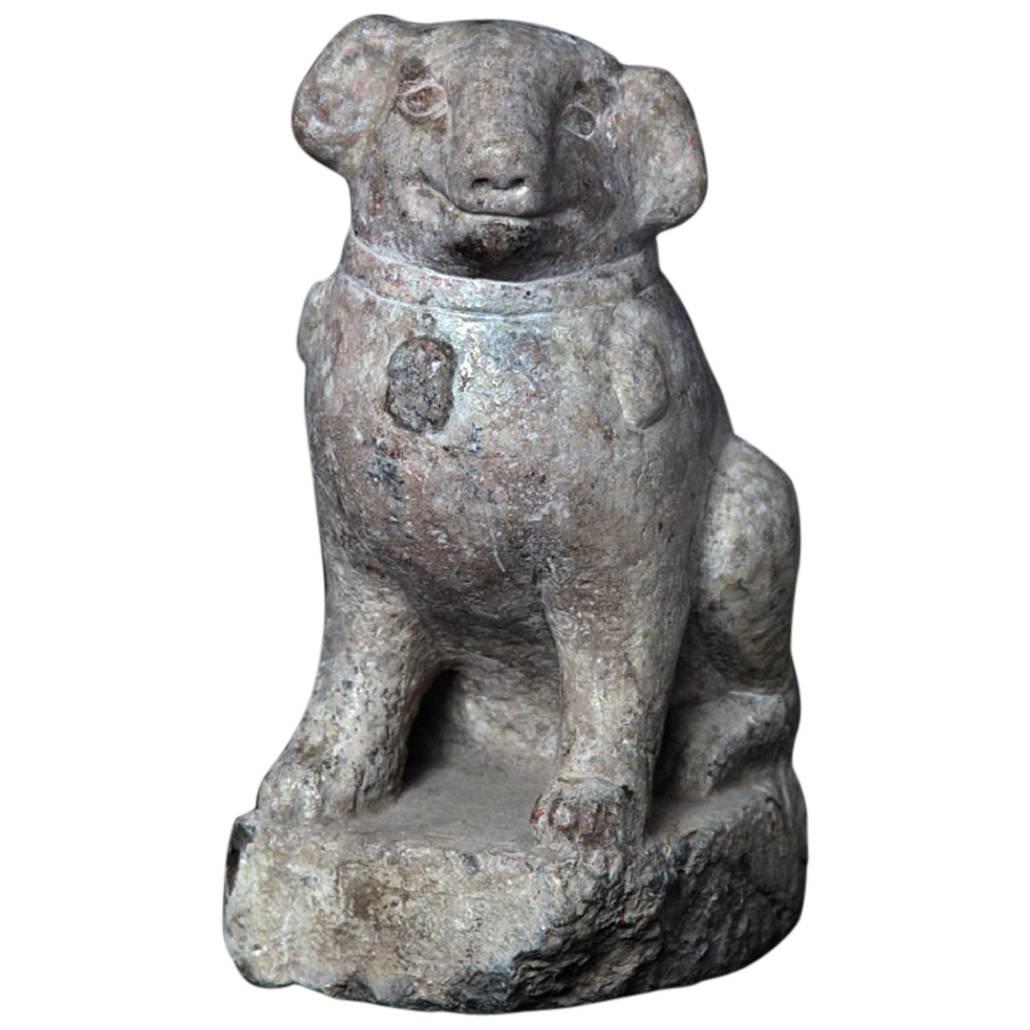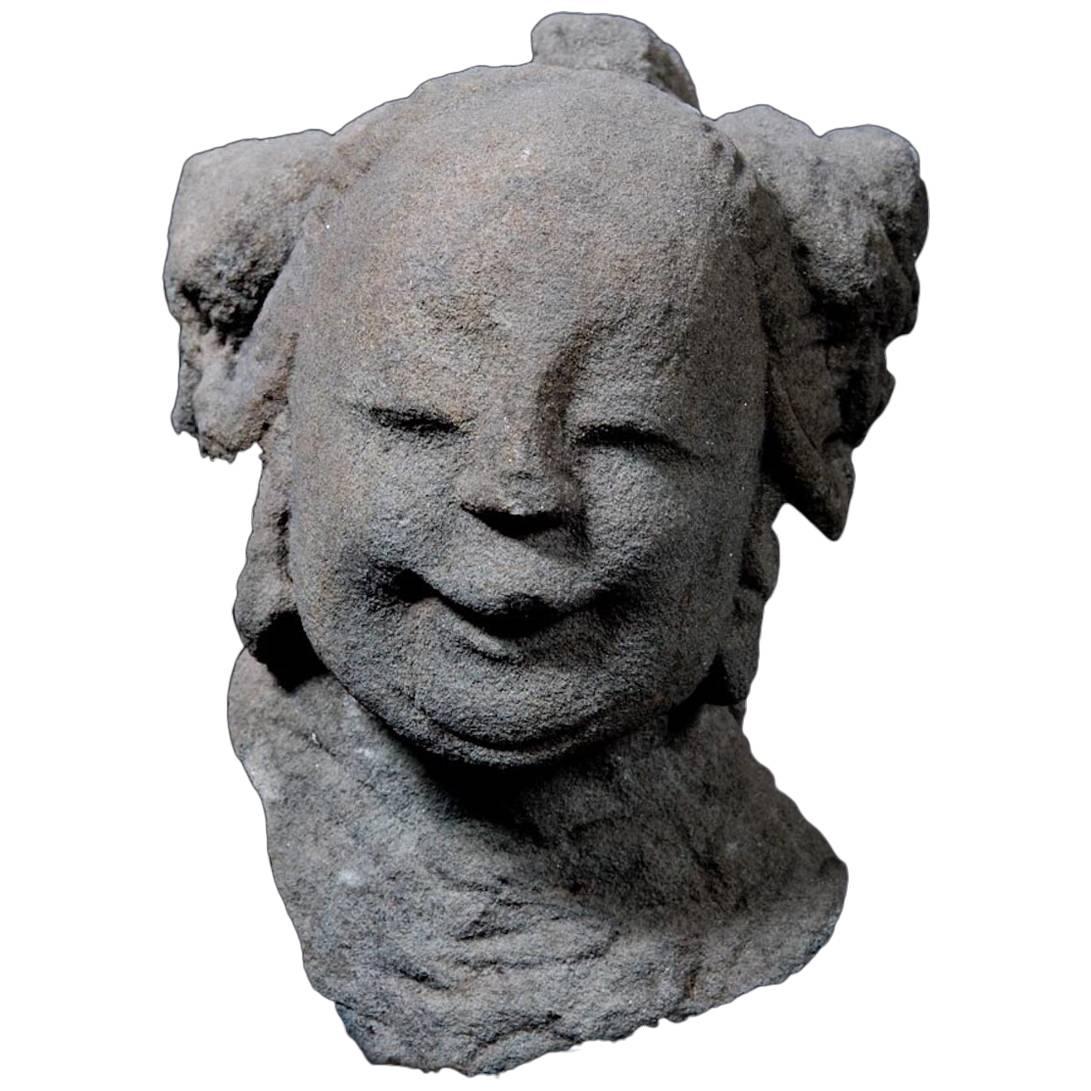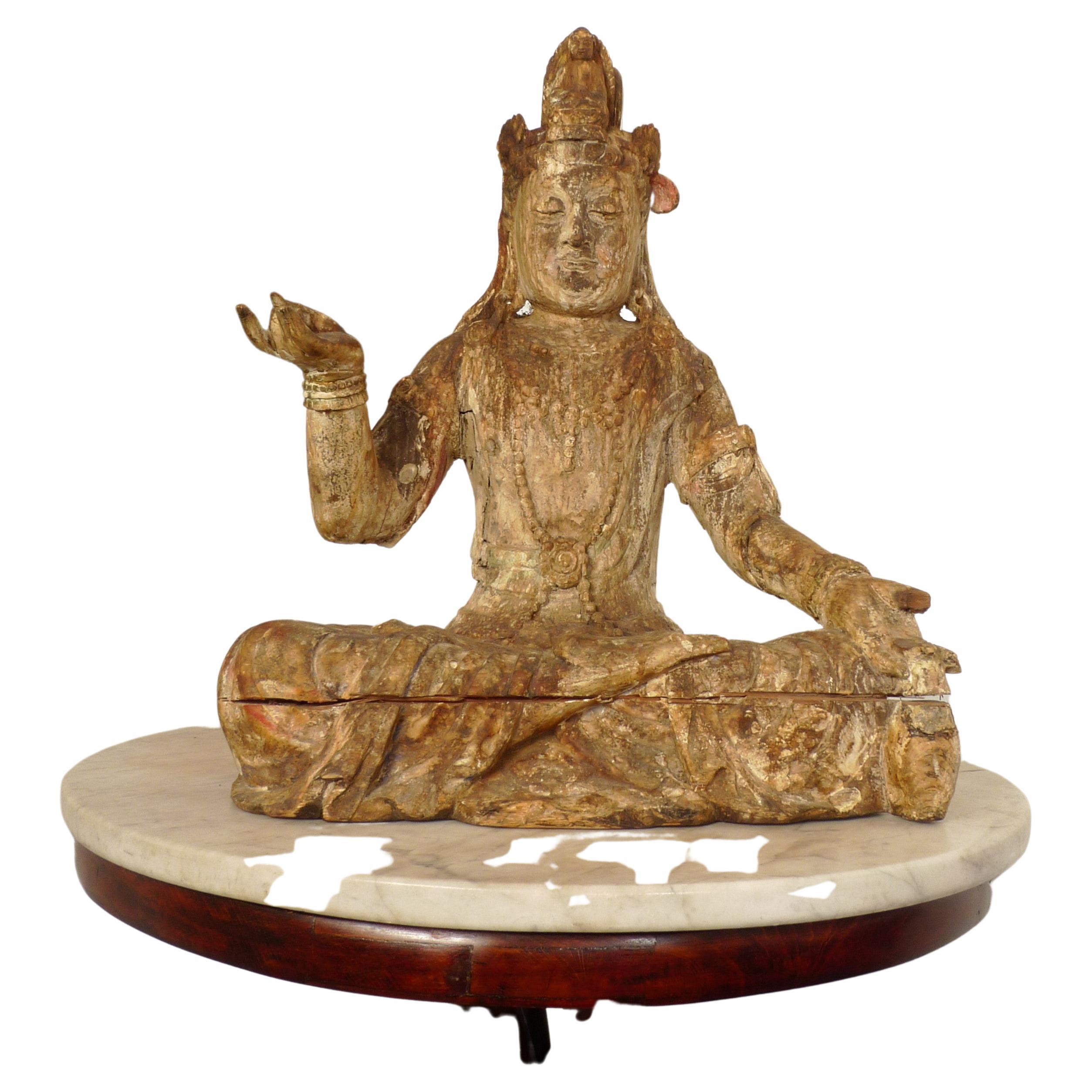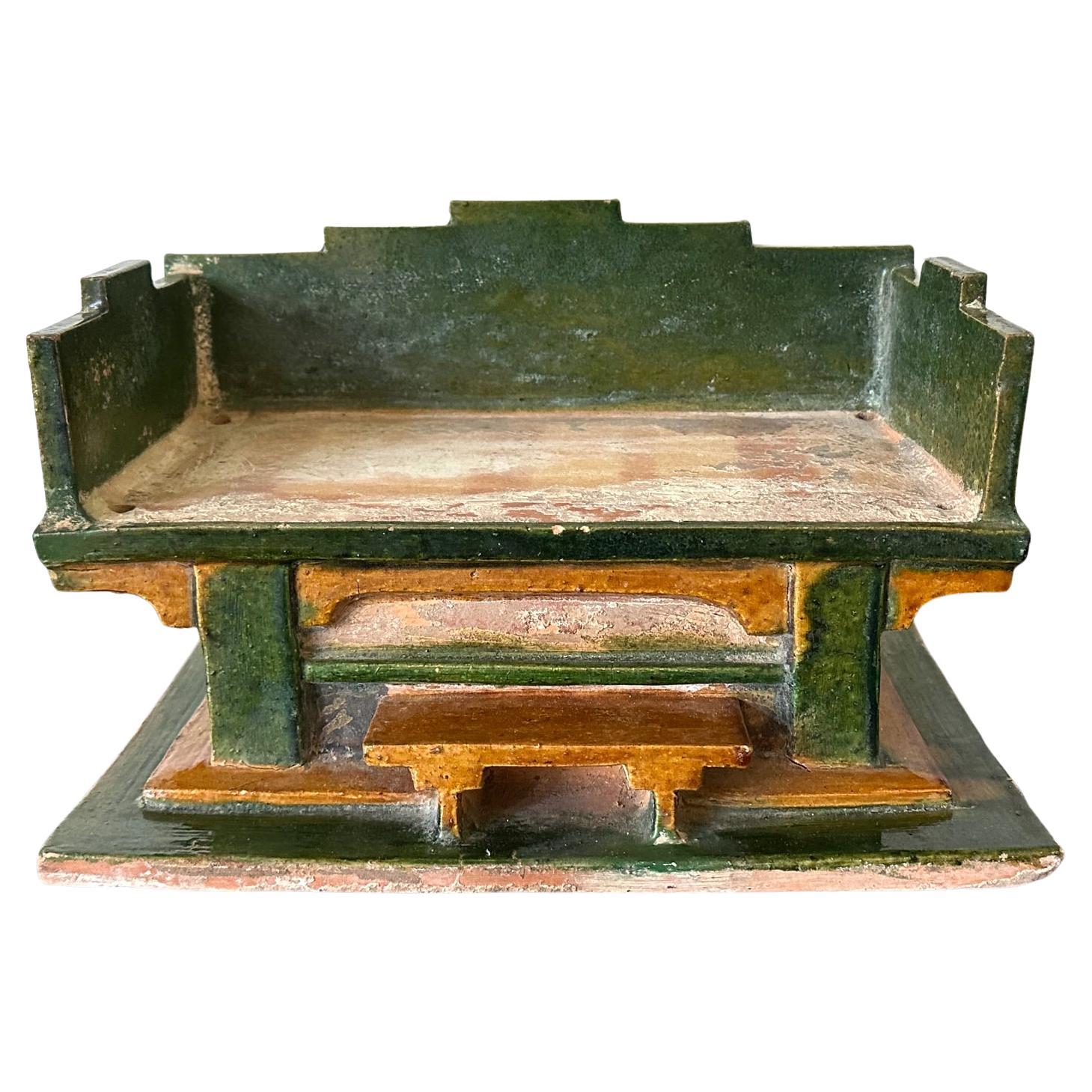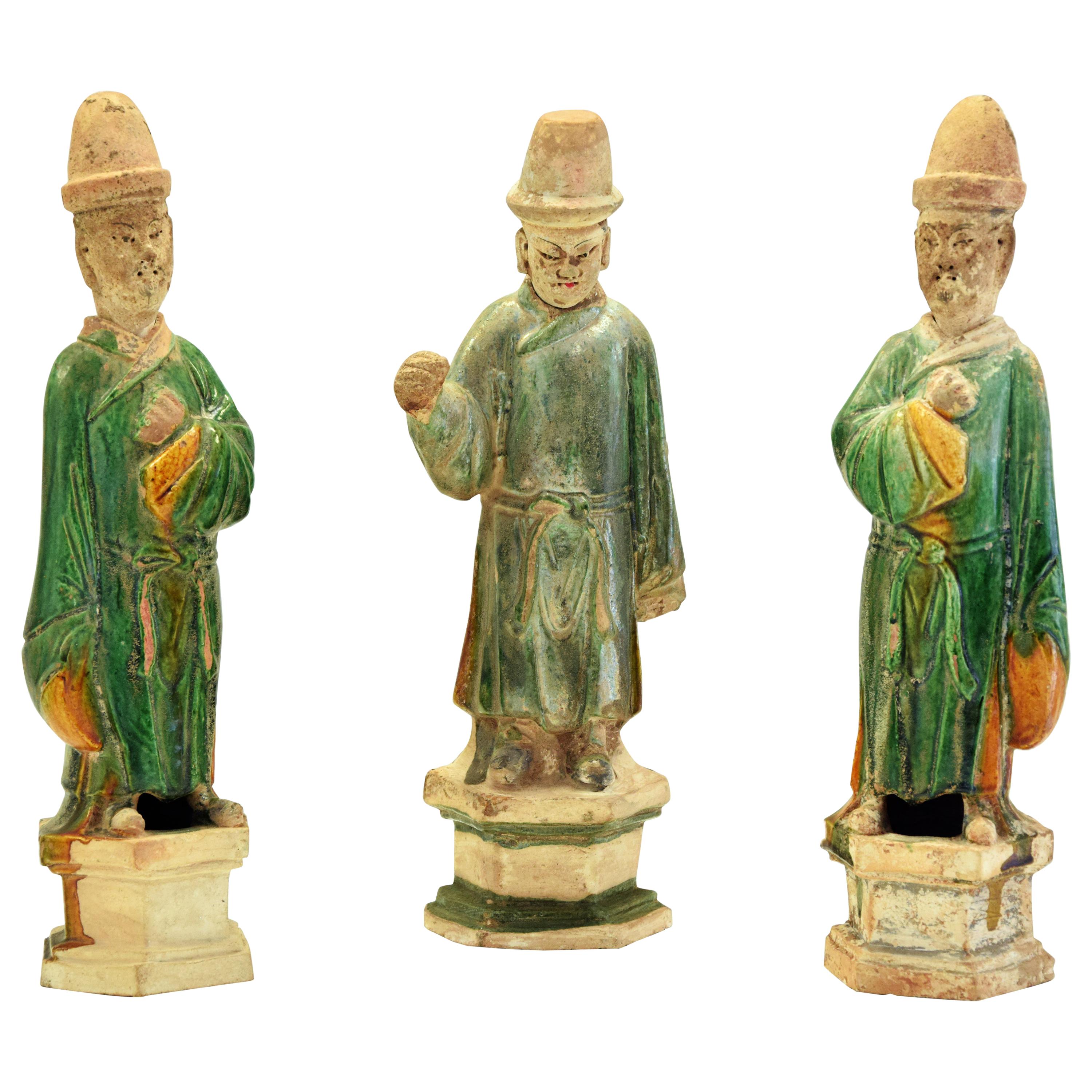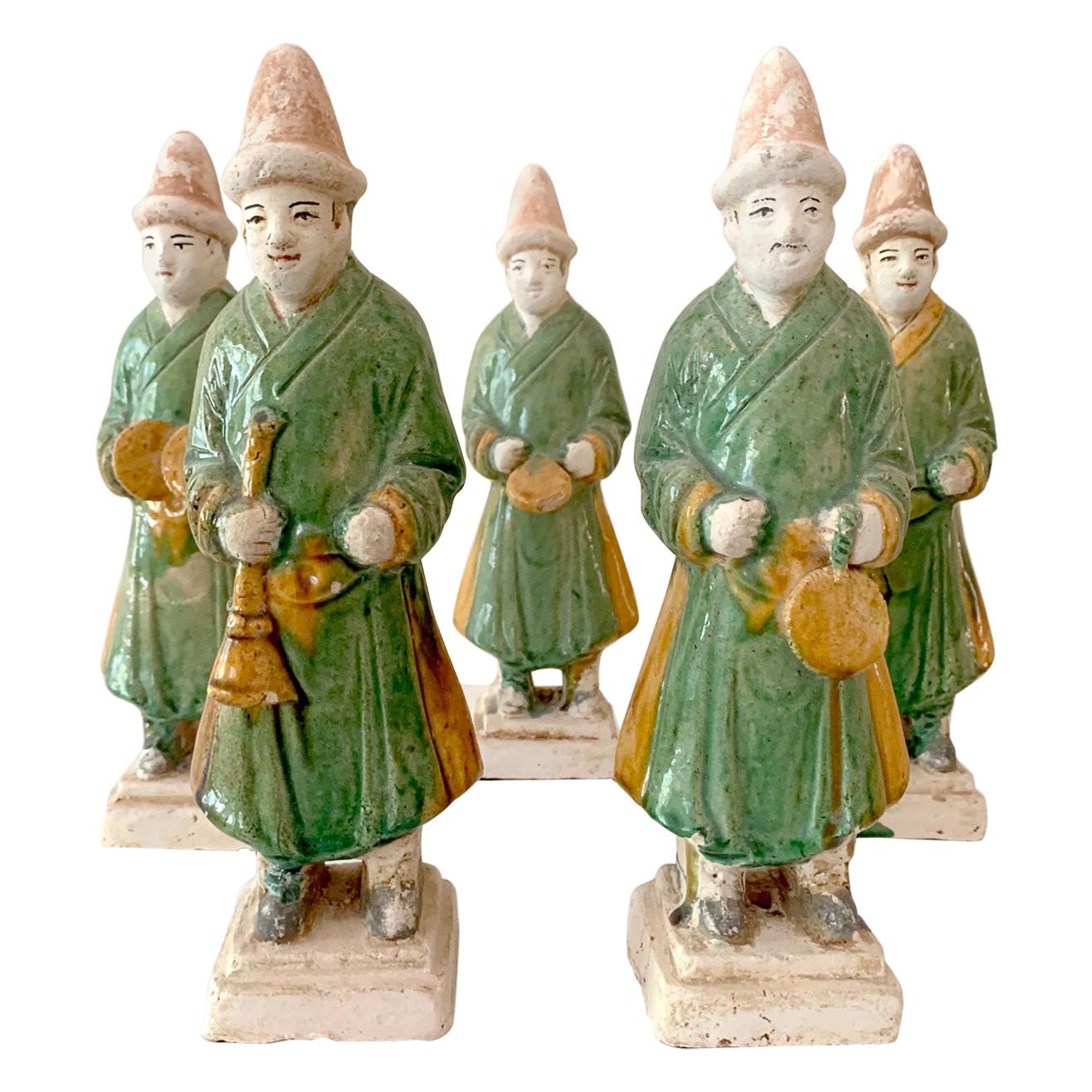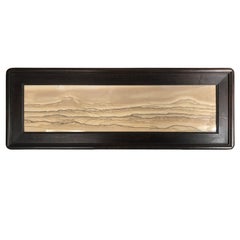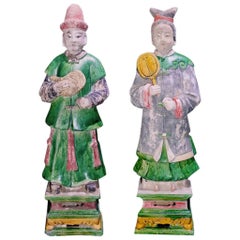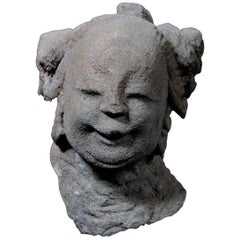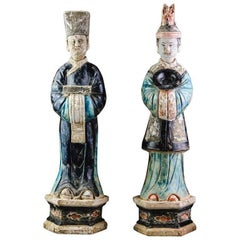
Ancient Pair of China Ming Cobalt Blue Tomb Treasure Sculptures, 1368-1644
View Similar Items
Want more images or videos?
Request additional images or videos from the seller
1 of 10
Ancient Pair of China Ming Cobalt Blue Tomb Treasure Sculptures, 1368-1644
About the Item
- Dimensions:Height: 20 in (50.8 cm)Width: 5 in (12.7 cm)Depth: 4 in (10.16 cm)
- Style:Ming (Of the Period)
- Materials and Techniques:
- Place of Origin:
- Period:
- Date of Manufacture:1480
- Condition:Wear consistent with age and use.
- Seller Location:South Burlington, VT
- Reference Number:1stDibs: LU128928376243
About the Seller
5.0
Platinum Seller
These expertly vetted sellers are 1stDibs' most experienced sellers and are rated highest by our customers.
Established in 1990
1stDibs seller since 2015
2,209 sales on 1stDibs
Typical response time: 1 hour
More From This SellerView All
- Important Ancient Chinese Effigy Pug Dog, Ming Dynasty 1368-1644Located in South Burlington, VTChina, a carving of a canine “Pug”, Ming Dynasty, 1368-1644 CE Dimensions: 38 cm, 15” High Photographs taken indoors and out of doors for your viewing pleasure. The hand carved limestone beast shown on its haunches with naturalistic joyful expression and a well defined compact head, ears, noes, eyes, feet, and tail parted to one side on reverse with distinctive collar ornament seated four square on a thick base all-over showing a weathered surface from significant age. Formerly exhibited “Asia Week” New York City, Fuller Building, Hutton Gallery 2006. Provenance: ex collection luoyang, Henan Province, China. Includes custom display base as shown Catalog reference: 35 years collecting 35 treasures, Number 35, p.76 (photo) In ancient China, it is a well-known fact that several types of small dogs were bred and were favored pet gifts between emperors and kings including Lion Dogs, Pekingese and Lo-sze breeds. Some Lo-sze are pictured wearing collars with bells a frequent combination fancied by European royalty of the seventeenth and eighteenth centuries. Lo-sze or pugs were prized for their compact body, good bones, flat face, square jaw, short coat, curled tail, side set back ears, and temperate disposition. History: Placing stone animals in important tombs can be traced back at least to the Qin Dynasty (221-206 BCE), some two thousand years ago. In ancient times, stone animals and human figures placed before imperial tombs symbolized royal power and privilege in addition to decorative functions. The first Ming tomb...Category
Antique 15th Century and Earlier Chinese Ming Sculptures and Carvings
MaterialsLimestone
- China Antique Pair "Spirit Path" Horse Sculptures, Ming Dynasty 500 Years OldLocated in South Burlington, VTChina, a monumental pair (2) of 500 year old lime stone “Spirit Path” Equine horse head sculptures. Ming dynasty, (1368-1644 CE). A pair of near life size and robust head sections with fine, wavy combed manes, well defined mouths, ears, nostrils, and ornamental bridles, all carved in a medium to dark gray limestone with considerable weathering to surfaces. The smaller head with a later inscription on bottom and signed “Zhuang”. Formerly exhibited “Treasures from Asia”, Shelburne Vermont, Shelburne Art Center, 2006. Originally found in the vicinity of the village of Chuan near Luoyang City, Henan Provance, China. Each mounted on a custom iron display stand. Dimensions: A the smaller 32.5cm, 13” high and 62.5cm, 25” in length and with display stand, 60cm, 24” high; b the larger 37.5cm, 15” high and 67.5cm, 27” in length and with display stand 65cm, 26” high. Please view additional photographs from our Chinese antiquities catalog 35 Years Collecting 35 Treasures, page 60. History: Placing stone animals and human figures along spirit paths in front of important tombs can be traced back at least to the Qin Dynasty (221-206 BCE), some two thousand years ago. In ancient times, stone animals and human figures placed before imperial tombs symbolized royal power and privilege in addition to decorative functions. Life size “spirit path” stone horse sculptures are known and can be viewed from Ming dynasty tombs including thirteen imperial tombs of the Ming Dynasty scattered over an area of forty square kilometers in Changping District to the northwest of Beijing. The first Ming tomb...Category
Antique 16th Century Chinese Ming Statues
MaterialsLimestone
$28,000 Sale Price41% Off - Chinese Natural Stone "Painting" Dunes GaloreLocated in South Burlington, VTExtraordinary Natural work, one of a kind. Framed in our own custom "arts and crafts" wood frame. This Chinese extraordinary natural stone painting is of a Minimalist depiction of what appear to be sand dunes in natural sand and light colors. This is called a dream stone Shih-hua. They are cut from historic Dali marble found in the Cangshan mountains of western China. These mysterious mountains, unique in the world, are known for yielding incredible and fantastic natural landscaped works of art created over tens of millions of years from mineral inclusions that affected the process of ancient organic material which transformed into limestone and finally resulted in marble- a metamorphic hard stone. This art form is centuries of years old since the Ming dynasty. Dream stones became favored art in the west particularly since the 19th century when French collectors named them Pierres de reve. This thin marble stone painting is approximately 1/4" thick and is cut from a large slab of rough material revealing incredible patterns in soft white and gray colors. Its weight is surprisingly modest- easily hung with standard hardware. On occasion, private collectors would invite an artisan to inscribe a poetic description onto their more important dream stones and in this case the artists' seal mark and calligraphy translation reads: Beautiful Land of long sides of Mountains. Dimensions: Measures: Frame 13.5 inches high and 38.5 inches wide. Site 8 inches x 33 inches Provenance: Private Chinese collection, Yunnan, China. History of dream stone paintings: Chinese painting stone that were cut from stone found on Shuang Yang mountain in Dali mountains Captivating compositions, They might remind us of a long string of rugged mountain caps from a distance. These dream stones are cut from a scarce regional stone yielding notoriously “fuzzy” detailed paintings. To find examples possessing clear, contrasting detail like this one is indeed a rare find. Fine stone paintings like this example are rare as access to and availability of resource material diminishes. After a thin coating of wax is carefully applied to its surface to protect and reveal its beautiful subtle colors, this stone painting is signed upper right position with poetic verse and seal of an artisan who describes its majestic beauty. Reference: Dreaming of Dreamstones China’s Extraordinary Natural Stone Paintings, Schneible Fine Arts. Dreaming of Dreamstones – World’s first comprehensive English text publication covers China’s extraordinary natural Stone Paintings, by author and dream stone lecturer Douglas Schneible, 35 pages, softcover, ISBN 978-0-578. See photos. We have been dealing in authentic Chinese natural stone paintings...Category
Late 20th Century Chinese Furniture
MaterialsMarble
- Chinese Antique Carved "Long Life" Wedding Marriage Chest, 19thc.Located in South Burlington, VTA long life wedding marriage chest In Chinese Mandaran, the symbol "Shou" a Chinese character ,signifies longevity and may frequently be found as decoration. it is this character...Category
Antique Late 19th Century Chinese Qing Furniture
MaterialsBrass
$3,840 Sale Price20% Off - China Finest Antique Dream Stone And Mother Pearl Inlaid ChairLocated in South Burlington, VTFinest Quality Dreamstone Inlaid Chair China- an extraordinary prolifically crafted example of an antique hand carved hardwood chair inlaid with multiple natural dream stone "paintings" plus "butterfly and mother of pearl" inlays in its hardwood arms and seat, late 19th century. This type of old Chinese furniture art form with marble inlay is centuries of years old dating as far back as the Ming dynasty (1368-1644). Fine round and rectangular dream stones depicting mountains and the natural outdoor scenery are inlaid in the seat, back and interior sides of this finest furniture example. Thin marble inlaid stone "paintings" are approximately 1/4" thick and are cut from a large slab of rough material revealing incredible patterns in soft white and gray colors. The hardwood (elmwood) frame is tenon joined. The natural stone "paintings" were hand especially for fine export chairs as in this example. Chair dimensions: Height 38.75 inches Width 25.75 inches Depth 19 inches Period : late Qing period, 19th century Provenance: Private American Chinese collection Reference: Dreaming of Dreamstones China’s Extraordinary Natural Stone Paintings, Schneible Fine Arts. Dreaming of Dreamstones – World’s first comprehensive English text publication covers China’s extraordinary natural Stone Paintings, by author and dream stone lecturer Douglas Schneible, 35 pages, softcover, ISBN 978-0-578. See photos. We have been dealing in authentic Chinese natural stone paintings...Category
Antique Late 19th Century Chinese Qing Furniture
MaterialsMarble
$6,800 Sale Price43% Off - Japanese Antique Bronze Cats Pair Hand Cast With Playful PoseLocated in South Burlington, VTFrom our recent Japanese Acquisitions trip to Kyoto. A fine pair of antique curious Japanese cast bronze sensuous cats beautifully handcrafted in an attractive and unusual style. Cats were originally domesticated because they hunted mice that would eat stored grains, protecting the food stores. It was a beneficial situation for both species, cats got a reliable source of prey, and humans got effortless pest control. This mutually beneficial arrangement began the relationship between cats and humans which continues to this day. In Japan, there are also cats described as Maneki Neko, also referred to in English as the good fortune or good luck cat...Category
Early 20th Century Japanese Taisho Sculptures and Carvings
MaterialsBronze
You May Also Like
- 6 Elegant Ming Dynasty Court Attendants in Glazed Terracotta, China 1368-1644 ADLocated in San Pedro Garza Garcia, Nuevo LeonA fine set of a six court attendants as in the Forbidden City of Beijing, elegantly dressed in a Green & Red Daopao – a traditional men’s formal attire from the Ming Dynasty dated 1368-1643 A.D. – with glazed robes and Red Pigment remains in their hat and belts. They stand in an honorary posture atop a red plinth, some with orifices in their hands, where spirit objects were placed to comfort or satisfy the deceased. The heads are detachable, as often seen on the larger figures from this period. They are accompanied by a Certificate of Authenticity, and Certificate of Expertise by Jean-Yves Nathan - a leading authority specialized in Far East Archaeology from the CEDEA (The European Confederation of Art Experts). Burial figurines of graceful dancers, mystical beasts, and everyday objects reveal both how people in early China approached death and how they lived. Since people viewed the afterlife as an extension of worldly life, these figurines, called mingqi, sometimes referred as “spirit utensils” or “vessels of ghosts” disclose details of routine existence and provide insights into belief systems over a thousand-year period. The Ming dynasty was the ruling dynasty of China – then known as the Empire of the Great Ming – for 276 years (1368–1644 AD). Founded by Chu Yuan-chang, the rebel leader that was successful in removing the mongols from the throne. Chinese control was re-asserted in China and eastern Asia. Literature became more important, schools were created, and the justice system was reformed. The Ming dynasty is described by some as "one of the greatest eras of orderly government and social stability in human history,” was the last imperial dynasty in China ruled by ethnic Han Chinese. The practice of burying ceramic objects with the deceased went into decline from the 10th to the 14th Century AD. There was a revival in placing miniature representations of glazed terracotta objects such a furniture, food offerings, horses, miniature statues...Category
Antique 15th Century and Earlier Chinese Ming Antiquities
MaterialsTerracotta
- Magnificent Court Attendants in Terracotta - Ming Dynasty, China 1368-1644 AD TLLocated in San Pedro Garza Garcia, Nuevo LeonA magnificent pair of male and female courtiers from the Ming Dynasty (1368-1644 CE) in excellent condition. They are wearing traditional Daopao robes in green and black garments wit...Category
Antique 15th Century and Earlier Chinese Ming Antiquities
MaterialsTerracotta
- Ming Dynasty Celestial Deity Head Carved in Stone - China '1368-1644 AD'Located in San Pedro Garza Garcia, Nuevo LeonWonderful celestial deity head with a jovial expression in stone with a finely engraved cap. It is mounted on a custom lucite base. This piece is accompanied by a Certificate of Authenticity, and Certificate of Expertise by Jean-Yves Nathan - Specialist in Asian Arts for the CEDEA (The European Confederation of Art Experts). The Ming dynasty was the ruling dynasty of China – then known as the Empire of the Great Ming...Category
Antique 15th Century and Earlier Chinese Ming Antiquities
MaterialsStone
- Lady Guanyin Bodhisattva Gilded Wood Carving - Ming Dynasty, China 1368-1644 ADLocated in San Pedro Garza Garcia, Nuevo LeonMagnificent Lady Guanyin Bodhisattva seated in Royal Relaxation pose hand-carved in Gilded Wood with traces of paint still visible. This expressi...Category
Antique 15th Century and Earlier Chinese Ming Antiquities
MaterialsWood
- A large wood Buddha/Guanyin with traces of pigments Ming Dynasty (1368-1644)By MasterLocated in Vienna, ATA LARGE WOOD FIGURE OF GUANYIN WITH TRACES OF PIGMENTS MING DYNASTY (1368-1644) The bodhisattva is shown seated in padmasana, wearing long flowing ro...Category
Antique Mid-17th Century Chinese Ming Sculptures and Carvings
MaterialsHardwood
- Pair of Chinese Ming Dynasty Tomb Funeral Pottery Chair ModelsLocated in Atlanta, GAA pair of Chinese stoneware horseshoe cross chairs circa Ming dynasty (15th-17th century). The miniature models were traditionally made as burial offeri...Category
Antique 16th Century Chinese Ming Ceramics
MaterialsStoneware
